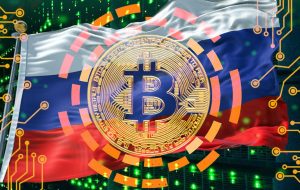10 million Bitcoin Ordinals on the blockchain
2 min readOrdinals – no topic is more controversial in the Bitcoin bubble. The hype around NFTs and BRC-20 tokens has taken the network by surprise: transactions hit records, blocks were overfilled, fees rose. A chain reaction as seen in Ethereum during the 2021 NFT boom. But the trend around the “blockchain inscriptions” also shows its chocolate sides: Miners make returns, the variety of applications on the blockchain has expanded, a growth spurt for the BTC ecosystem. The community is divided, and ordinals seem to pose a smaller problem for the network than initially feared.
Bitcoin ordinals break record
Data such as text, images, audio files or videos have also been entering the Bitcoin blockchain via the ordinals protocol for several months. Attaching such data to a satoshi, the smallest bitcoin unit of account, is called inscription. While ordinals are not tokens like NFTs or Ethereum ERC-20 tokens, they can be used for similar things. And have quickly become a sure-fire success.
Around ten million ordinals are according to Dune now immortalized on the Bitcoin blockchain. A profitable business, especially for miners. 44 million USD has been paid in fees for ordinals alone. After the mining sector bust wave, “Bitcoin NFTs” have picked up the profit margin again.
However, the hype was bought dearly with horrendous fees. In early May, the average cost of a bitcoin transfer increased to $30. The losers of this trend seemed quite clear: the users. Network and block size reached their limits, unconfirmed transactions piled up in the mempool. And a dispute quickly broke out about the sense and nonsense of NFTs on the Bitcoin blockchain.
Much fuss about nothing?
In retrospect, the BTC culture war seems exaggerated. The number of ordinals written to the blockchain every day is decreasing, transactions from the mempool are being processed, and fees have now fallen to three dollars. After the first FOMO storm, the Ordinals market goes back to business as usual.
Ordinals critics will have to get used to the fact that the Bitcoin network will continue to serve as a point of contact for NFTs, meaning that fees can always run out. Bitcoin is now after Ethereum second largest network for NFTs, before Solana or Polygon. Blockchain bridges like Bitcoin Miladys should create NFT synergies between the blockchains, after the dry spell of the last few months, the market could be on the verge of a second spring.
However, the example of Ethereum also shows that the problems exacerbated by ordinals can produce solutions. On Ethereum, too, fees have risen drastically during the NFT hype wave – and then fallen again. The scaling problems were largely solved by second-layer solutions. The Lightning network has therefore recently collected many arguments that in the end scaling solutions could benefit from the ordinals trend and contribute to an overall better user experience – necessity is the mother of invention.






